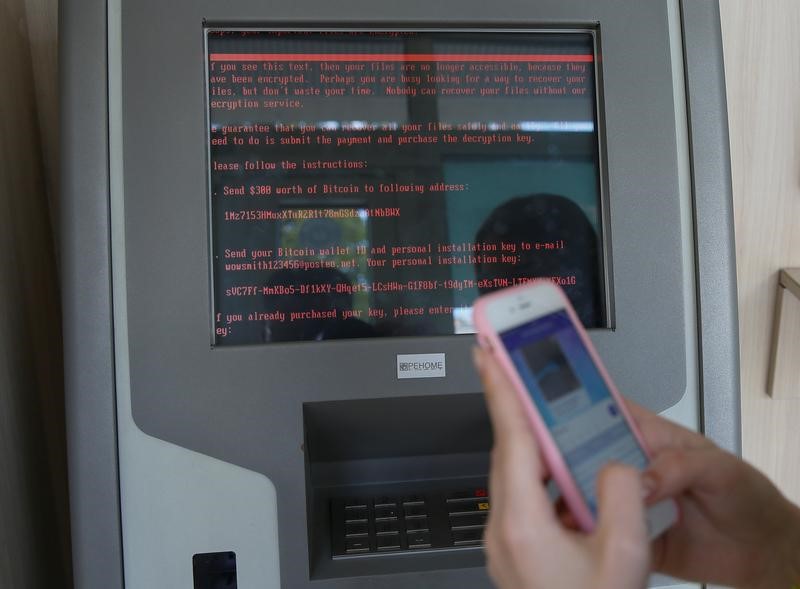By Stephen Jewkes and Paola Arosio
MILAN (Reuters) - Italian bank Monte dei Paschi di Siena (MI:BMPS) set out plans to get out of the "emergency room" and return to profit on Wednesday, clearing the way for a state bailout that should remove the biggest threat to the country's financial stability.
The world's oldest bank said on Wednesday it expected a net profit of more than 1.2 billion euros ($1.4 billion) in 2021, from a loss of 3.2 billion euros last year, as part of a restructuring plan approved by European authorities.
"It's a conservative plan. We're not shooting at unrealistic targets," Chief Executive Marco Morelli told analysts on a conference call to present the new plan.
Morelli said no mergers were planned at the moment. "There is no Plan B on the table," he said.
Burdened by bad loans and a mismanagement scandal, Monte dei Paschi has for years been at the forefront of Italy's slow-brewing banking crisis.
Italy's fourth-largest lender was forced to request state aid in December after its attempt to raise capital from private investors failed.
On Tuesday the European Union approved a 5.4 billion euro state bailout after it agreed to a drastic overhaul in a move that will leave Rome holding around 70 percent of the bank.
EU officials speaking on condition of anonymity said Italy would have to exit the bank at the latest by the end of the 5-year plan.
"What we experienced in the last nine months is pretty much unheard of: It's like an ER department with an emergency every five minutes," Morelli said.
Italy has pledged more than 20 billion euros of taxpayer money in the space of a week to rescue three of its banks, but the country's wider financial sector is still weighed down by around 300 billion euros of non-performing loans (NPLs).
At the end of last month, Rome committed up to 17 billion euros to rescue regional banks Popolare di Vicenza and Veneto Banca though it said the final bill would be much lower, adding the state might even turn a profit from the bailouts.
"The Monte Paschi plan looks good but we need to see execution. Still, coming after the Veneto rescues it settles nerves about Italy's banking system," said Zenit fund manager Stefano Fabiani.
PATH TO PROFIT
In its 2017-2021 plan, Monte dei Paschi sees a headcount reduction of around 5,500 to just over 20,000 and a fall in the number of branches to around 1,400 from some 2,000 in 2016 as it seeks to ensure the lender is profitable in the long term.
It expects to reach a return on equity of more than 10 percent in 2021 while its CET1 ratio, a measure of financial strength, is seen at 14.7 percent from 8.2 percent in 2016.
Crucially, the bank will sell 28.6 billion euros of gross bad loans, of which 26.1 billion will be securitized through a transfer to a privately funded vehicle on market terms, with the operation partially funded by bank rescue fund Atlante II.
The bank said it would sell securitized notes to Atlante II at 21 cents on the euro. "We are in line if not slightly above recent market transactions," Morelli said.
The CEO, who expects the bank's shares to relist in the second half of September, said 5.5 billion euros in deposits were recovered in the first quarter, adding liquidity was no longer an issue.
"The bank managed to stay alive," he said, referring to the close shadowing of the lender by European authorities. "We negotiated the plan with the EU Commission line by line."
Rome is under the spotlight for taking advantage of exceptions in EU rules designed to stop the use of taxpayer money to deal with bank crises.
Policymakers now want Italy to come up with a solution for tackling NPLs without requiring any more government money to prop up its beleaguered banking sector.
European Central Bank vice president Vitor Constancio said on Wednesday there needed to be swift action to establish a stronger secondary market in Europe for non-performing loans and policy changes to incentivise banks, investors and the authorities to tackle the issue more effectively.

"Partial solutions and further delays are not options if we want to tackle the problem of NPLs" he wrote in Italy's main business newspaper Il Sole 24 Ore.